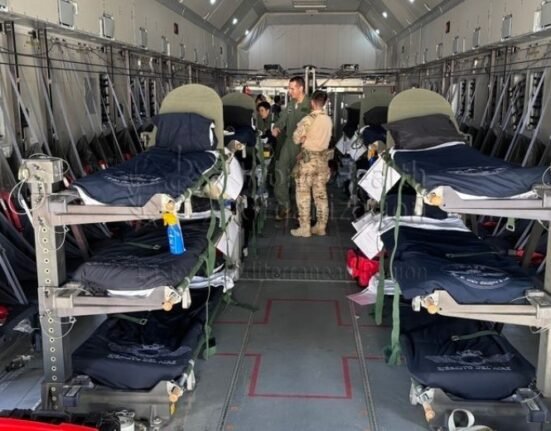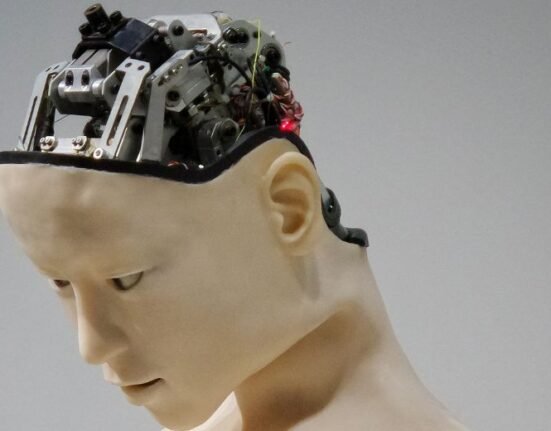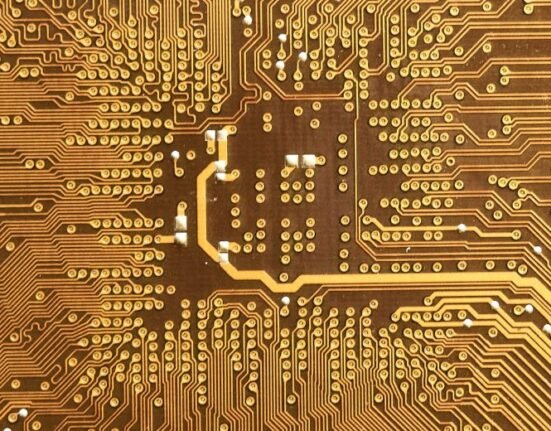HQ Team
April 18, 2023: Spanish doctors inserted new lungs into a 65-year-old man, requiring a transplant, using robotic surgery, without separating or cutting the bones or opening the region between the neck and abdomen.
“For the first time, a lung has been transplanted using a minimally invasive technique that entails robotic surgery,” according to Vall d’Hebron University Hospital.
An access route, through an eight-centimetre incision in the lower part of the sternum, just above the diaphragm, was created through which diseased lungs were removed and the new lungs inserted.
The patient, Xavier (one name), had pulmonary fibrosis.
Idiopathic pulmonary fibrosis is a specific form of chronic, progressive fibrosing interstitial pneumonia of unknown cause, primarily occurring in older adults.
It is limited to the lungs and causes lung scarring, resulting in reduced oxygen intake over time.
Cough, weight loss
The clinical symptoms of idiopathic pulmonary fibrosis include a non-productive cough, weight loss, low-grade fevers, fatigue, joint pain, and muscle or group of muscles.
“Today, we are proud to present a pioneering technique carried out by the Catalan Healthcare System that contributes to the clinical improvement of all patients internationally,” said Manel Balcells, Minister of Catalonia.
“We do it together with Xavier, the first patient transplanted with robotic surgery and with a new, less invasive access route that allows a faster recovery,” he said.
Vall d’Hebron “is a reference centre in lung transplantation for 10 million people in Catalonia, Aragon, and the Balearic Islands. As a public healthcare system, we offer new techniques in global clinical practices that improve the well-being of all patients.”
Lung transplantation replaces one or both diseased lungs with healthy ones. Generally, this happens when a disease involves severe and progressive chronic respiratory failure.
Lung transplants began in 1981 in California. In Catalonia, the procedure was carried out exclusively for children and adults at the Vall d’Hebron University Hospital. Since the program began, more than 1,556 lung transplants have been carried out at Vall d’Hebron.
Cedars-Sinai Hospital
The robotic surgery had only been used once, although in a less ambitious procedure, at the Cedars-Sinai Hospital in Los Angeles, US.
Last year, the Cedars-Sinai Hospital used robotic surgery for the first time as part of a lung transplant when suturing the new lung to the patient’s airway and great vessels.
However, the rest of the operation was performed traditionally, and the lung was introduced through the ribs, as is customary.
The robotic surgery on Xavier was carried out as part of a multidisciplinary intervention involving professionals from the Thoracic Surgery and Lung Transplants Department, the Anaesthesia, Resuscitation and Pain Management Department, the Cardiac Surgery Department, and the Transplant Nursing Department of the university.
“The main problem with opening up the thorax in lung transplant procedures is that it is a very aggressive approach which leads to a very delicate post-operative period,” said Dr Albert Jauregui, head of the Thoracic Surgery and Lung Transplants Department at Vall d’Hebron University Hospital.
Post-operative infection
In any transplant procedure, medication must be administered that depresses the patient’s immune system for the rest of their life to prevent rejection of the new organs. This means that the risk of post-operative infection is always very high.
In some cases, infection eventually occurs, and the wound does not properly close — when both lungs are transplanted, the incision is about 30 centimetres long — running from one side of the chest to the other.
If the wound does not close due to an infection, it is necessary to re-operate to bring the infection under control.
This novel surgical technique allows us to cut a small section of the skin, fat, and muscle, leaving a wound that closes easily,” Dr Jauregui said. “Not only is this much safer than the traditional method, but for this first patient, it has been painless.”
“We at Vall d’Hebron had been thinking about making this aggressive and less invasive. We were always faced with the same problem. We couldn’t find a route to remove the diseased lung and insert the new one.”
Finally, Dr Iñigo Royo Crespo, a Thoracic Surgery and Lung Transplants Department specialist came up with the idea of exploring an access route used to operate on lung cancer and the thymus known as subxiphoid surgery.
Da Vinci
The xiphoid is a small cartilaginous extension of the lower part of the sternum.
The four arms of the Da Vinci robot were inserted through four small holes (measuring 8 to 12 millimetres wide) made in different parts of the thorax.
The thoracic surgeon sits at the console and moves the robot’s arms using four control levers. One lever moves an arm that delicately separates the heart from the lung so that it doesn’t hinder the removal or insertion of the lungs.
Two arms carry the surgical tools, such as scalpels and forceps, and the fourth arm incorporates a camera that allows the surgeon to have a 3D view of the inside of the body.
The robot enables minimal, precise, and less invasive incision by this technology, which removes the risk factors of trembling, involuntary movements of surgeons, and postural fatigue in long operations.








